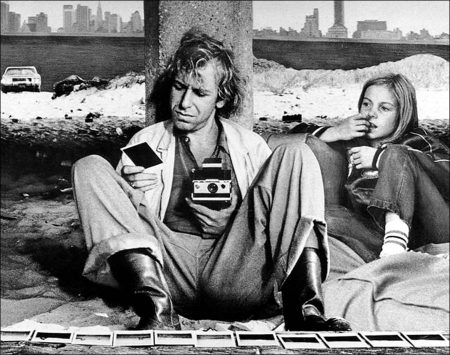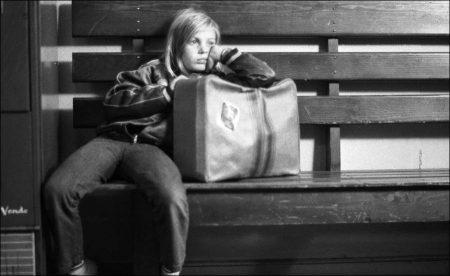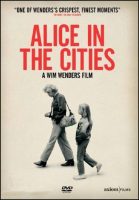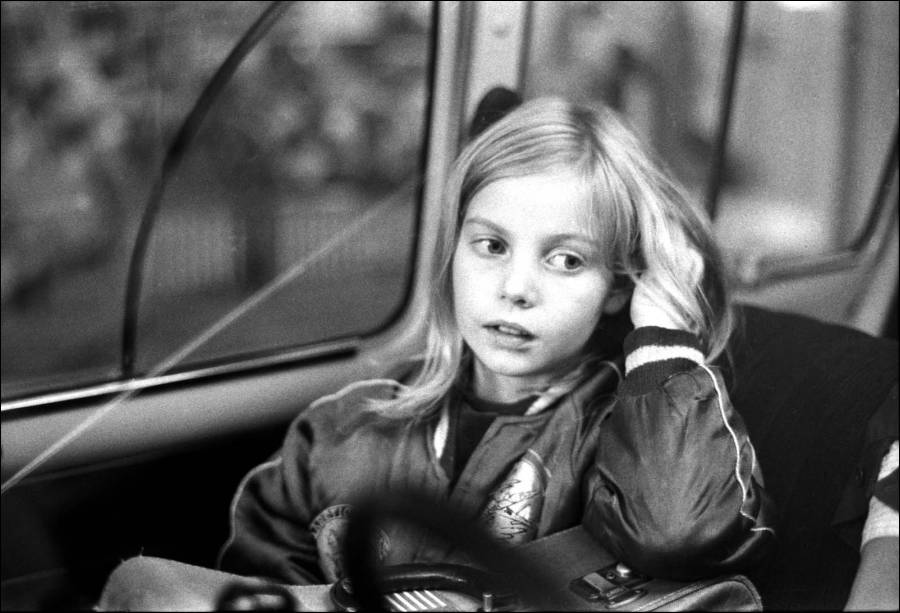Alice in the Cities movie storyline. German journalist Philip Winter has a case of writer’s block when trying to write an article about the United States. He decides to return to Germany, and while trying to book a flight, encounters a German woman and her nine year old daughter Alice doing the same.
The three become friends (almost out of necessity) and while the mother asks Winter to mind Alice temporarily, it quickly becomes apparent that Alice will be his responsibility for longer than he expected. After returning to Europe, the innocent friendship between Winter and Alice grows as they travel together through various European cities on a quest for Alice’s grandmother.
Alice in the Cities (German: Alice in den Städten) is a 1974 German road movie directed by Wim Wenders. It is the first part of Wenders’ “Road Movie trilogy”, also which includes The Wrong Move (1975) and Kings of the Road (1976). The film is shot in black and white by Robby Müller with several long scenes without dialogue. The film’s theme foreshadows Wenders’ later film Paris, Texas.
According to Wenders, Alice in the Cities, his fourth feature-length film, came at a major turning point when he was deciding whether to remain a filmmaker. He felt that his first two features were too heavily indebted to John Cassavetes and Alfred Hitchcock, while his third was an ill-advised adaptation of The Scarlet Letter. Alice in the Cities was a conscious attempt to make something only he could do.
The scenario of a young girl and a writer thrown together was inspired by his long-time collaborator Peter Handke’s experience as a single parent. The influence of Handke’s 1972 novel Short Letter, Long Farewell, also featuring an alienated German-speaker travelling across the United States, can be inferred from the film’s use of clips from John Ford’s Young Mr. Lincoln, itself heavily referenced in the novel. The film can be seen as a response to Handke’s novel.
While Wenders was preparing Alice in the Cities, a friend took him to see Peter Bogdanovich’s new film, Paper Moon. To his horror, the film appeared to be very similar to the one he was making, prompting him to call his production office and break the news that he was canceling the project, believing the film they were going to shoot “had already been made”.
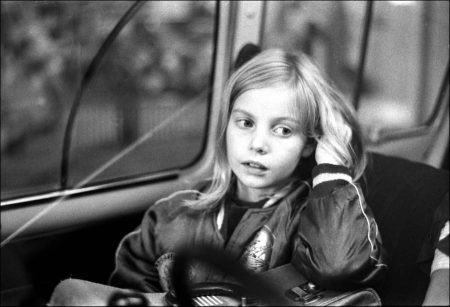
Soon after, Wenders went to Samuel Fuller, who had invited him to come visit after a prior encounter in Germany. Wenders mentioned to Fuller that he had just cancelled a project, and upon finding out that Wenders had already secured the financing for the film, he convinced Wenders that it was a mistake. After a few hours of discussion, Wenders realized he could still proceed, albeit with some extensive rewrites to differentiate Alice in the Cities from Paper Moon, and he called his production office to tell them that the film was back on.
Wenders and Robby Müller had hoped to shoot in 35 mm with the Arri BL, which had just come out at the time, but it was too difficult to find one, a common problem with newly issued cameras. Combined with their budgetary limitations, they were left with no other option than to switch to 16 mm. They filmed with a 1:1.66 wide-screen format, a common European format at the time, and drew it on the viewfinder. According to Wenders and Müller, that was the format they preferred, but due to television broadcast demands, they had to provide a 3:4 full frame format of the film, even though they never composed for it. This would create some problems in later years before everything was rectified with a definitive restoration in 2014.
The film was shot close to chronological order beginning in North Carolina, proceeding to New York, then continuing in Amsterdam and finishing in Germany, all throughout the summer of 1973. As the film progressed, the production grew more confident about improvising each scene. Some parts, like certain hotel scenes and almost anything filmed in a car, closely followed the script due to logistical reasons, but by the end of the film, Wenders said they virtually ignored the script altogether.
Licensing became an issue when Wenders tried to include footage he had shot of Chuck Berry in Frankfurt (presumably in late July 1973). The footage was important as it included a performance of Berry’s classic song, “Memphis, Tennessee”, where the singer is trying to re-connect with his daughter. According to Wenders, it was also an additional inspiration for the film, but Berry’s camp demanded a clearance fee that they could not afford to pay. Instead, Wenders approached D.A. Pennebaker, who had footage of Berry singing the song from the concert that yielded Sweet Toronto. This became a viable workaround, for licensing Pennebaker’s footage (which they had to decolorize for the film) was substantially cheaper than clearing their own with Berry’s camp.
Alice in the Cities (1974)
Directed by: Wim Wenders
Starring: Yella Rottländer, Rüdiger Vogler, Lisa Kreuzer, Edda Köchl, Ernest Boehm, Lois Moran, Didi Petrikat, Sibylle Baier, Hans Hirschmüller, Jane Jarvis, Sam Presti, Didi Petrikat
Screenplay by: Wim Wenders, Veith von Fürstenberg
Cinematography by: Robby Müller
Film Editing by: Peter Przygodda
Music by: Can
MPAA Rating: None.
Distributed by: Axiom Films (UK / Ireland)
Release Date: May 17, 1974
Views: 207
